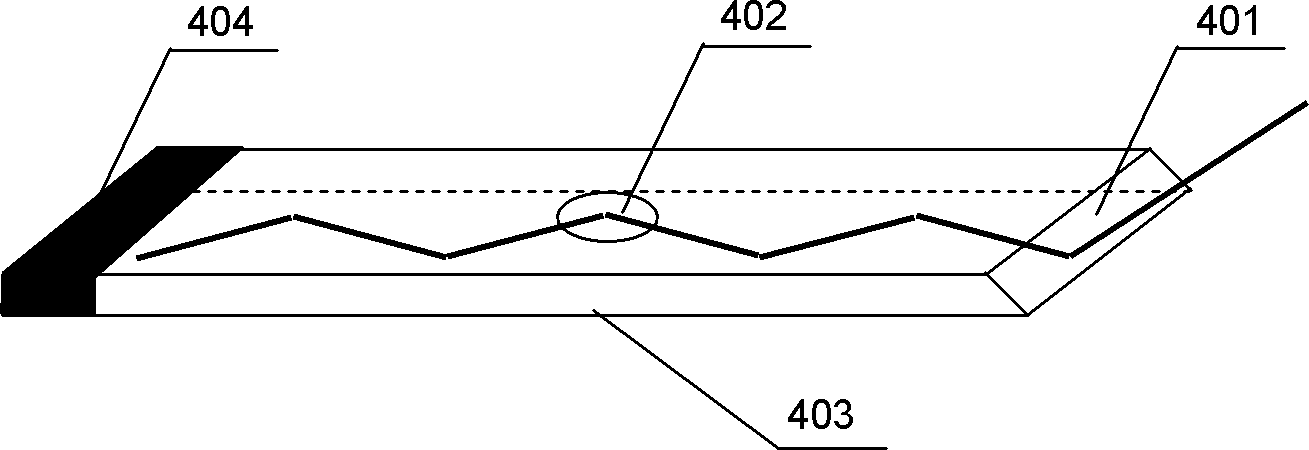Multi-channel planar waveguide evanescent wave biosensor
A biosensor and planar waveguide technology, applied in material excitation analysis, fluorescence/phosphorescence, etc., can solve the problems of complicated sample injection flow path and procedures, large space occupation, and long measurement cycle
- Summary
- Abstract
- Description
- Claims
- Application Information
AI Technical Summary
Problems solved by technology
Method used
Image
Examples
Embodiment Construction
[0014] The working process of the multi-channel planar waveguide evanescent wave biosensor of the present invention is as follows: first, the surface of the sensing element 4 is modified with various biorecognition molecules, and then the sensing element is combined with the sample pool 5 . Turn on the peristaltic pump 6, transfer the mixed sample of the analyte into the sample pool 5, after a certain period of reaction, the fluorescently labeled analyte is fixed on different parts of the sensing element; turn on the laser 1, and the excitation light is coupled into the sensing element 4. Evanescent waves are generated at each total reflection point to excite the fluorescent molecules fixed on the surface of the sensing element 4 to generate fluorescence; the fluorescence is collected by the multimode optical fiber group 3, filtered by the filter group 8 and then enters the photoelectric Detector group 9, fluorescent signals of different parts on the surface of sensing element ...
PUM
| Property | Measurement | Unit |
|---|---|---|
| surface roughness | aaaaa | aaaaa |
| wavelength | aaaaa | aaaaa |
| refractive index | aaaaa | aaaaa |
Abstract
Description
Claims
Application Information
 Login to View More
Login to View More - R&D
- Intellectual Property
- Life Sciences
- Materials
- Tech Scout
- Unparalleled Data Quality
- Higher Quality Content
- 60% Fewer Hallucinations
Browse by: Latest US Patents, China's latest patents, Technical Efficacy Thesaurus, Application Domain, Technology Topic, Popular Technical Reports.
© 2025 PatSnap. All rights reserved.Legal|Privacy policy|Modern Slavery Act Transparency Statement|Sitemap|About US| Contact US: help@patsnap.com



